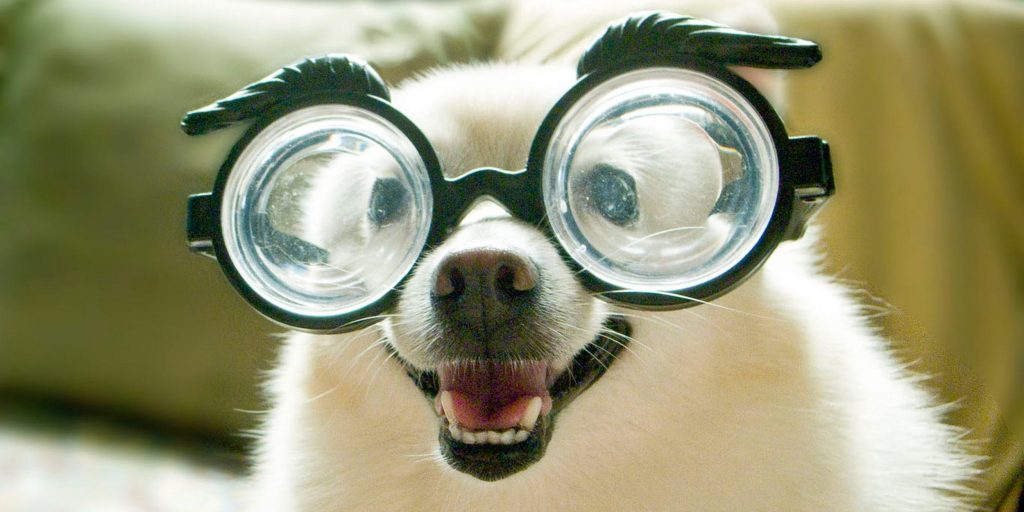- Dogs can see certain colors, but they see the world like someone who is red-green colorblind
- Your dog also has a wider field of vision than you because their eyes are further apart.
- Dogs also have a harder time seeing long distances— they have 20/65 to 20/85 vision.
- Visit Insider's Health Reference library for more advice.
There's a common misconception that dogs can only see in black and white — in reality, they can see colors like blue and yellow, though their color vision is much more limited than humans.
Dogs also have some visual advantages over humans, like being able to see more clearly in the dark. Here's how dogs see color, and some other fun facts about dogs' vision.
How does a dog's vision compare to a human's?
Your eyes pick up color using a type of cell called cones in your retina. The same is true for dogs, though our cones aren't exactly the same.
- Humans have three types of cones, "which enables us to see different shades of red, blue-violet, and green," says Alison Meindl, DVM, a veterinarian, and professor at Colorado State University.
- Dogs have two types of cones that pick up blue-violet and yellow shades, says Lara Sypniewski, DVM, a professor of small animal medicine at Oklahoma State University.
This means that dogs see in a similar way to humans who are red-green colorblind. "They don't see red or green and they see everything in shades of blue and yellow," says Jay Neitz, Phd, a researcher and professor of ophthalmology at the University of Washington.
You might notice this while playing with your dog — "dogs are not good at seeing a bright red or orange ball on green grass but they are good at seeing blue from all other colors," Neitz says.
Humans may have the advantage in color vision, but dogs definitely have us beat in the realm of night vision. This is because dogs' eyes have more light-gathering power than ours, Neitz says.
A dog's retina is largely composed of cells called rods, which can sense light, even in very low-light conditions, says Sypniewski.
Fun facts about dog vision
There are several other specialized skills that dogs have and a few more key ways that dogs' vision differs from humans.
- Dogs are especially good at sensing movement. "The increased number of rods in the dog's retina also increases their ability to detect motion," Sypniewski says. This ability can help them detect small prey like squirrels.
- Dogs have a wider field of vision than humans. Dogs' eyes are set slightly farther apart than humans' eyes, so they can see further to the side in each direction.
- Dogs have blurrier long-distance vision than humans. A human with perfect vision has 20/20 vision, while dogs have 20/65 to 20/85. This means that "a dog must be at 20 ft. to read a letter that a human with 20/20 vision would be able to read at 65 or 85 ft.," says Sypniewski.
- Dogs have trouble seeing things very close up. Dogs can see objects clearly if they're at least 13 to 20 inches away from their eyes, "but if the object is closer, the image may be blurry," Sypniewski says. Humans can see objects slightly closer — about 10 inches away from the eye.
- Dogs' eyes may glow brightly in flash photos. Dogs have a thin reflective layer in the back of the eye called a tapetum that increases their low-light vision. "Many owners notice this tapetum when they take a picture of their dog with a flash and see a yellowish/green color reflecting back," Sypniewski says.
- Dogs may recognize you by your shape and motion. "If your dog recognizes you from a distance, it is not because it can see the details of your face like a human would, but rather because of your shape or the way you move," Neitz says.
Insider's takeaway
"Contrary to popular belief, dogs don't see in black and white," Meindl says. Instead, their color vision is similar to that of red-green colorblind humans.
Dogs also have certain visual skills that humans lack, like increased night vision, a wider range of view, and a sharp eye for motion.
If you have concerns about your dog's vision or if you notice they are having difficulty seeing, call your primary care veterinarian for a thorough eye examination, says Sypniewski.
"Loss of vision over time is common in the aging dog as it is in the human, but any abrupt changes should be evaluated by your veterinarian as soon as possible," Sypniewski says.
